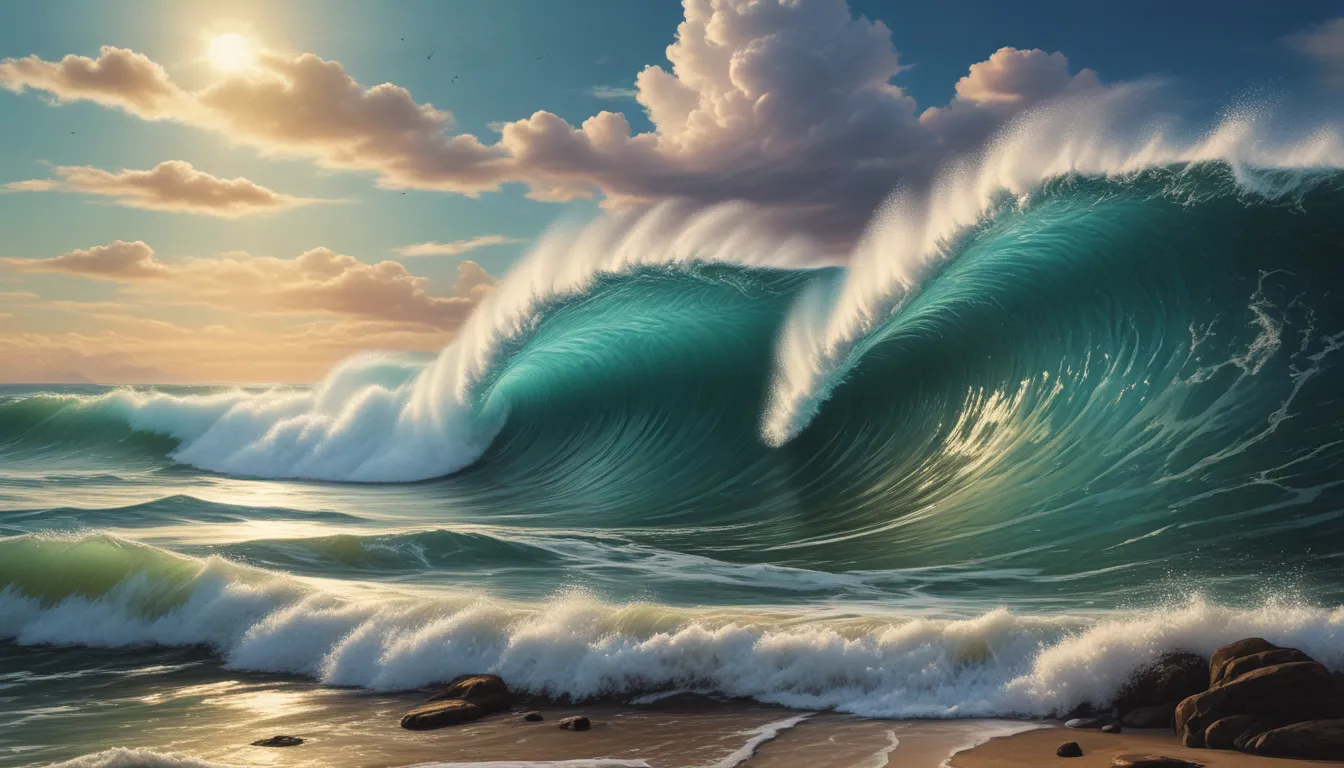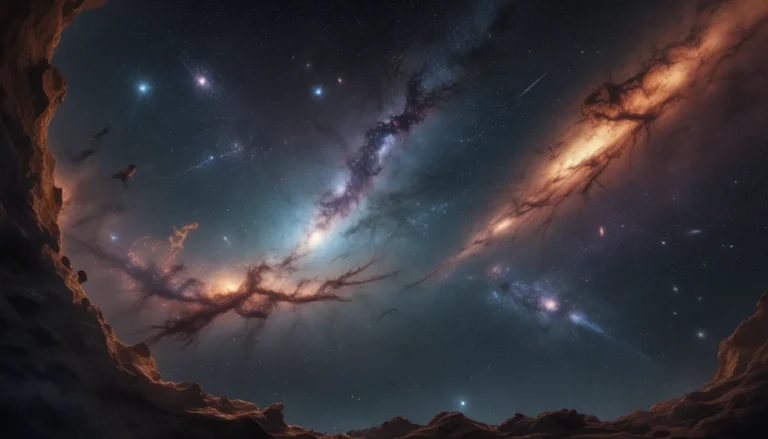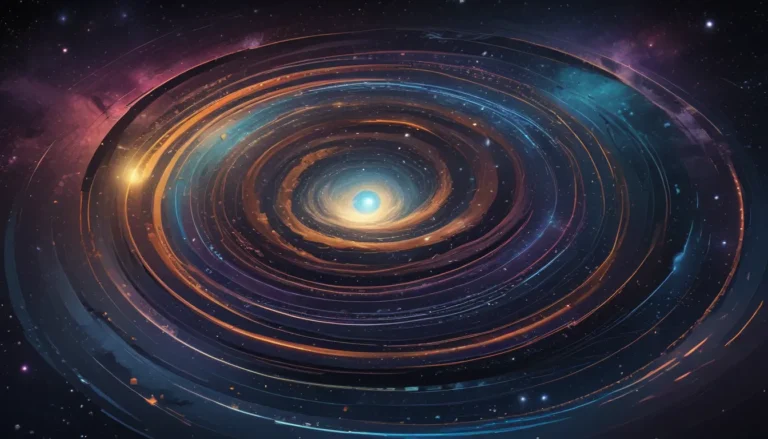The pictures we use in our articles might not show exactly what the words say. We choose these pictures to make you interested in reading more. The pictures work together with the words but don’t take their place. The words still tell you the important facts.
Waves are a captivating natural occurrence that surrounds us, from the soothing crash of ocean waves to the gentle ripples in a peaceful lake. They have a significant impact on our planet and influence various aspects of our lives. Understanding waves is not only intriguing but also essential for marine scientists, surfers, and engineers designing structures to withstand their force.
In this article, we will delve into the mesmerizing world of waves and uncover 15 fascinating facts that will leave you in awe of their power and beauty. Whether you are a nature enthusiast or simply curious about how waves function, this comprehensive guide will provide you with valuable insights into this captivating natural phenomenon. So, get ready for an exciting journey through the world of waves!
Key Takeaways:
- Ride the Wave: Waves are formed by wind, can travel thousands of miles, and come in various shapes and sizes. They play a crucial role in shaping coastlines and supporting marine life.
- Power of Waves: Waves can be harnessed for renewable energy and have inspired art and literature. They are essential in physics and play a vital role in the environment.
Waves Formation and Characteristics:
Waves are formed through the interaction of wind with the surface of the ocean. When wind blows across the water, it creates friction and transfers energy to the surface, resulting in the formation of waves. These waves can travel vast distances across the ocean, with some traveling thousands of miles without losing their energy or momentum. Waves come in different sizes and shapes, ranging from tiny ripples to massive swells, depending on factors such as wind speed, duration, and distance traveled.
The Height and Types of Waves:
The tallest recorded wave was over 100 feet high, known as a rogue wave, a rare phenomenon typically seen in the open ocean. Waves can be classified as either mechanical or electromagnetic. Mechanical waves, such as ocean waves, require a medium to propagate, while electromagnetic waves, such as light waves, can travel through a vacuum.
Tsunamis and Surfing:
Tsunamis are powerful waves caused by undersea earthquakes or volcanic eruptions, traveling at high speeds and causing significant destruction when they reach the shore. Surfers utilize ocean waves for the popular sport of wave riding, riding the face of a wave using a surfboard and harnessing the energy and power of the ocean.
Waves’ Impact on the Environment:
Waves play a crucial role in shaping coastlines through erosion, gradually wearing away rocks, cliffs, and shorelines over time. The motion of waves transfers nutrients and oxygen to marine ecosystems, supporting marine life by promoting circulation and oxygenation in the ocean.
Wave Energy and Study:
Wave energy can be harnessed and converted into a renewable source of power through wave energy converters that capture the motion of waves and convert it into electricity. The study of waves is an essential part of the field of physics, with scientists and researchers studying wave properties and behavior to better understand various natural phenomena.
Waves Interaction and Influence:
Waves have a unique ability to refract and diffract when they encounter obstacles or changes in the medium, leading to bending and spreading of waves as they interact with different materials or topography. Waves have also been a significant source of inspiration in art, music, and literature throughout history, evoking emotions and conveying powerful messages through their beauty and symbolism.
Conclusion:
In conclusion, waves are fascinating natural phenomena that play a crucial role in shaping our world. Understanding the science behind waves not only helps us appreciate their beauty but also allows us to harness their power for various applications. Whether you are a beach lover, a science enthusiast, or someone curious about the wonders of nature, delving into the world of waves will undoubtedly deepen your appreciation for the incredible forces that shape our planet.
FAQs:
- What causes waves? Waves are primarily caused by the transfer of energy through a medium, such as water or air.
- How fast do waves travel? The speed of waves varies depending on the medium, with ocean waves typically traveling at an average speed of around 20-30 miles per hour.
- Can waves occur in space? While waves as we know them may not occur in space, various types of waves, such as electromagnetic waves, do travel through space.
- Can waves be harmful? Certain types of waves can be harmful, such as large, powerful ocean waves or exposure to high levels of electromagnetic waves.
- Are there different types of waves? Yes, various types of waves exist, including ocean waves, sound waves, electromagnetic waves, and seismic waves.
- How do waves affect the environment? Waves shape coastlines, contribute to erosion, regulate climate, and distribute heat and energy.
- Can waves be harnessed for energy? Yes, wave energy converters can capture the power of ocean waves and generate renewable energy.
- How do animals use waves? Animals like dolphins and whales use sound waves for communication, navigation, and hunting.
- Can waves be measured? Yes, waves can be measured using various instruments, such as buoys and wave radars.
- How do waves affect surfing? Surfers rely on ocean waves for their sport, with different wave conditions creating varying surfing experiences.
Explore the World of Waves:
Whether you are captivated by the beauty of ocean waves, inspired by the power of sound waves, or intrigued by the science behind wave dynamics, the world of waves offers an endless array of discoveries. From their formation to their impact on the environment and everything in between, waves continue to captivate and intrigue us with their endless energy and beauty. Dive into the mesmerizing world of waves and unlock the secrets of this fascinating natural phenomenon that shapes our world.






